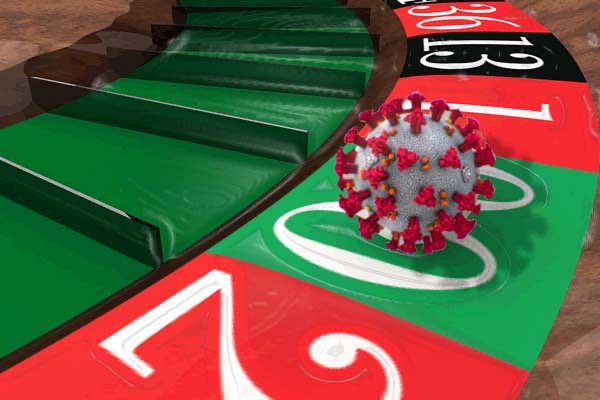
Hi Friends,
I know a lot of you are creating pods of friends and family with whom you socialize during this Coronavirus outbreak, and I am too. We all want some restriction-free time with a select group, especially for our kids. However, it is important to have your eyes wide open to the chances of your entire pod becoming infected with Coronavirus if one member were to catch it.
In Los Angeles, where I live, about 10% of people have already been infected. So, an average Angelino has a 10% chance of catching coronavirus between the beginning of the outbreak and now. Thankfully, I am not one of them and, like most reasonable people, I do not want to be. So, I hand sanitize a lot, wear masks, socialize outside, and avoid crowded spaces. For these reasons, I like to think I am better than average, and I imagine most of you do too.
But are we, really? Sure, I take precautions, but I live among people who eschew precaution and science itself, and that puts us all at risk. Maybe I lingered too close to one of these folks at the Target, or maybe I didn’t wash my hands carefully enough after using a shared restroom or laundry room that a virus spreader had just exited.
The one fact I can point to that truly lowers my chances of being infected today is the negative Coronavirus test result I received June 11, a test I took a few days after taking part in a Black Lives Matter bicycle protest in South Los Angeles. That means I could only have been infected the last six weeks. What were my chances of catching Coronavirus in that time period?
According to the LA Times, the seven-day average for Coronavirus-related deaths in LA County since May has been stubbornly consistent at 40 people per day, or 280 deaths per week. Assuming a mortality rate of .7%, that would mean 40,000 mostly asymptotic cases led to those deaths. With 10 million residents in LA county, that means .4% of our residents catch the virus each week. I’ll go over the math in more detail later in this article (which boils down to 1-.996^6), but that would give me a 2.4% chance of catching the virus over 6 weeks.
I’m sure some of you think that number is too high, so for the sake of argument, let’s assume I have a 1% chance of getting infected, which is generous. Further assume that the people I would choose for my pod also have a 1% chance of being infected. Keep in mind that these numbers are less than half of what I believe is true, but the conclusions are still pretty scary.
Here is a way to imagine my chances of catching Coronavirus: I spin a roulette wheel and if I land the green 00, I catch Coronavirus and so does everyone else in my pod. Each person in my pod gets one spin of the roulette wheel as well, and if any of them land a 00, we are all infected.
What are my chances of catching Coronavirus when there are two people in my pod? You might guess 2% because we each spin the wheel once and each have a 1% chance of catching the virus outside the pod. The correct answer is actually slightly lower, as you are double-counting the small chance that both of us catch the virus outside of the pod, and that needs to be subtracted out. This downward revision is small at first, but gets much larger as we add more people to the pod. The easiest way to calculate this correctly is by finding the probability of NOT catching coronavirus and subtracting that from one: 1 – (.99)^n, where ’n’ is the number of people in your pod. The .99 is the chance of not catching the virus. Feel free to make this number lower if you think your pod is “less special” than mine. Therefore, my hypothetical pod of two has a 1.99% chance of both catching coronavirus.
Most people don’t have just two people in their pod. I’m divorced, share custody of my 10-year-old son, and have a girlfriend who herself has a roommate. My ex-wife and I have each allowed our son restriction-free playdates with one other friend. The families of these children also have other adults in their pods. As far as I can determine, I have twelve people in my pod, so my chances are 1 – .99^12 or 11.36%, which is a little worse than the average for Los Angeles County. Predictably, I’m not extraordinary after all.
This Fall, classes at my son’s elementary school will be on-line only, a wholly sensible decision by the school district. That said, I personally was frustrated with on-line learning last Spring, and some in-person instruction could help ensure that my son takes school more seriously. In an effort to augment this curriculum, some parents are considering “learning pods” where a few neighborhood kids in the same grade will meet daily to study under the guidance of an adult. Plus, the four boys in my neighborhood’s proposed learning pod could play some sports, which is good for their health.
This strategy, however, would add at least 15 people to my pod, increasing the total count to 27, and raising the probability of pod-wide infection to 23.77%. What a terrible choice to make between my son’s education and a one-in-four chance of all of us catching this virus, and likely a few of us getting seriously ill.
Our pods are necessary for our emotional health, our pods are important for our children’s educations, and, as they grow larger, our pods increasingly can sicken or kill us.
Pod save us all!